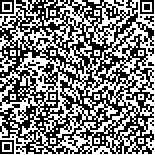| 本文已被:浏览 3523次 下载 2282次 |

码上扫一扫! |
|
|
| 高速球铣路径对淬硬钢SKD11表面摩擦特性的影响 |
|
黄为民1,2, 赵军1,2, 艾兴1,2, 王大伟1,2, 王桂杰1,2
|
|
1.山东大学 机械工程学院, 济南 250061;2.山东大学 高效洁净机械制造教育部重点实验室, 济南 250061
|
|
| 摘要: |
| 通过高速铣削试验与环-块摩擦磨损试验,借助白光干涉仪、超景深三维显微镜、显微硬度计等分析检测设备,研究了走刀路径对淬硬模具钢SKD11表面摩擦特性的影响。结果表明:球铣加工表面摩擦特性具有方向性,当走刀方向与摩擦方向垂直时,摩擦因数最小,磨痕宽度最窄,当二者夹角成45°时,摩擦因数最大,磨痕宽度最宽。球铣走刀路径影响加工表面形貌取向,表面形貌通过改变接触应力和磨屑捕捉能力来影响犁耕效应和黏着效应,进而影响摩擦特性。干摩擦工况下,主要磨损机理是磨粒磨损与氧化磨损,试验15 min后表面微沟槽形貌均已消失;而润滑工况下,表面微沟槽依然清晰,走刀路径与摩擦方向夹角成0°与45°试样表面出现磨粒磨损特征,而夹角成90°试样表面无明显划痕,表明采用该路径进行球铣加工具有较好的减磨效果。 |
| 关键词: 高速球铣 刀具路径 摩擦因数 磨损形貌 磨损机理 |
| DOI:10.11933/j.issn.1007-9289.20160803002 |
| 分类号:TG543;TH117.1 |
| 基金项目:山东省科技发展计划项目(2014GGX103041) |
|
| Effects of Tool Path on Tribological Behavior of High-speed Ball Milled Surface of Hardened SKD11 Steel |
|
HUANG Wei-min1,2, ZHAO Jun1,2, AI Xing1,2, WANG Da-wei1,2, WANG Gui-jie1,2
|
|
1.School of Mechanical Engineering, Shandong University, Jinan 250061;2.Key Laboratory of High Efficiency and Clean Mechanical Manufacture, Ministry of Education, Shandong University, Jinan 250061
|
| Abstract: |
| Effects of cutting tool path on tribological behavior of high speed ball milled surfaces of hardened SKD11 steel was investigated through ring-on-block friction and wear tests with the help of white light interferometer, super-high magnification lens zoom 3D microscope and microhardness tester. The results show that tribological behavior of ball milled surface has direction tendency. A minimum friction coefficient and wear width is reached when the sliding direction is perpendicular to the tool path direction. However, a maximum friction coefficient and wear width is achieved when the intersection angle between siding direction and tool path direction is 45°. Topography direction of ball milled surface is determined by the cutting tool path, which influences the contact stress and ability of trapping wear debris and then the ploughing and sticking effect. Main wear mechanism is dominated by abrasive wear and oxidative wear under dry sliding condition. In addition, micro-grooves induced by ball end milling process vanishes absolutely after sliding for 15 min. Nevertheless, micro-grooves are clearly observed though some abrasive wear characteristics are presented on the samples where the intersaction angle equaled to 0° and 45°. Samples obtained with the angle 90° scarcely show any scratches, which indicat a good anti-attrition ability. |
| Key words: high speed ball milling cutting tool path friction coefficient wear topography wear mechanism |